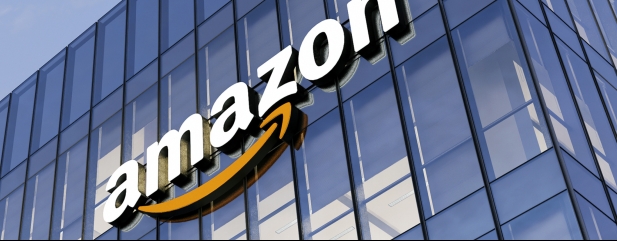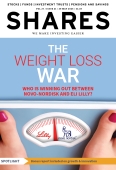Archived article
Please note that tax, investment, pension and ISA rules can change and the information and any views contained in this article may now be inaccurate.
Mini-Berkshire Hathaway Markel has a strong track record

Markel Group (MKL:NYSE)
Price: $1,867
Market Cap: £17.8 billion
With Warren Buffett recently (3 May) announcing his retirement from Berkshire Hathaway (BRK-B:NYSE), which he steered into one of the most successful firms in the US, it is surprising the Berkshire model has not been copied by more companies.
One contender for a ‘mini-Berkshire’ is Markel Group (MKL:NYSE) which runs a diverse family of companies encompassing everything from insurance to bakery equipment and building supplies.
Specialty insurance sits at the heart of the company and provides the capital to invest into wholly-owned market leading private businesses, and partial ownership positions in publicly traded companies. The company claims it is ‘a home for businesses designed to relentlessly compound capital over decades.’
How has it done relative to that lofty goal? In the words of chief executive Thomas Gaynor: ‘Our stock price has compounded at approximately 15% a year since 1986. A recent share price of $2,000 marked our eighth doubling of your money. That’s a 250-bagger, if you like to count it that way.’
Over the last five years, Markel’s intrinsic value per share has grown at a CAGR (compound annual growth rate) of 18% compared with a 9% CAGR in the share price. Markel is unusual in the corporate world in that it reveals to investors its workings to arrive at intrinsic value.
Markel’s estimate of intrinsic value is calculated by applying a 12-times multiple to the firm’s three-year average adjusted operating income, then adding the value of its equities and cash, minus debts and non-controlling interests, then dividing that sum by shares outstanding.
At the end of 2024, intrinsic value per share as calculated by Markel was $2,610, up 131% from the $1,125 value calculated in 2019. Gaynor adds some caveats: ‘Given its simplified nature, this calculation should be viewed as a directional indicator rather than a precise valuation.
‘While the five-year CAGR of intrinsic value provides an initial view of value creation, we consider additional factors in evaluating shareholder returns and in making capital allocation decisions,’ adds Gaynor.
TAKEOVER TARGET
In recent years Markel’s core insurance operations have lagged the performance of other leading insurers. For example, its reported combined ratio over the last five years has averaged 94.7%, underperforming the likes of Chubb (CB:NYSE) at 89.2% and Kinsale Capital Group (LNSL:NYSE) at 78.7%.
The combined ratio measures total claims and administration costs as a proportion of underwriting income. A ratio below 100 indicates a company makes an underwriting profit.
For context, Markel has made an underwriting profit nearly every year over the last two decades. This is an important factor because it can provide cheap funding to make investments outside of its insurance operations.
Activist investor Jana Partners has built a stake in Markel to push the company to explore a separation or sale of its private businesses, believing the entire company is an ‘attractive’ takeover target for larger insurance groups.
In response, Virginia-based Markel is reviewing ways to simplify its business structure. Markel commented: ‘Insurance is at the heart of what we do, and we’re fully committed to supporting areas within insurance that are excelling while also addressing underperformance.’
The company has asked shareholders, including Jana, for feedback on where it could improve. As part of the review, the company will also consider ways to improve capital allocation.
THREE ENGINES OF GROWTH
The specialty insurance division originated in 1930 when Sam Markel started an insurance business, coincidentally the same year as the birth of Warren Buffett.
The business grew domestically and internationally over the ensuing decades before listing on Nasdaq in 1986 at $8.33 per share, giving Markel a market capitalisation of around $30 million.
In 2005, Markel Ventures was established to deploy permanent capital into private businesses which had opportunities for sustainable growth. Today the portfolio comprises 21 companies.
The public and private equities portfolios are managed on four investment principles. Companies must demonstrate a good return on capital and low debt, be managed by teams with equal parts of talent and integrity, possess reinvestment opportunities to grow, and/or capital discipline. Finally, the company must be available to buy at a reasonable price.
These principles have been espoused at various times by Buffett in his annual shareholder letters. Not surprisingly, chief executive Gaynor is an admirer of Buffett. Gaynor assumed leadership over the wider group in 2023, having previously been its chief investment officer.
One important distinguishing feature of Markel’s investing philosophy which mirrors Berkshire’s approach is the benefit its sees in running unrealised investment gains, which reached $7.9 billion in 2024.
Assuming a tax rate of 25%, the gain represents a deferred tax liability of approximately $2 billion. As Gaynor explains in his shareholder letter: ‘This low-cost source of funds is a significant tailwind to our financial performance and our reward for being patient, long-term owners of businesses.
‘It sounds so simple. Why don’t more companies pursue this strategy? ’We compounded this interest-free loan steadily and unrelentingly, year by year and decade by decade,’ adds Gaynor.
Top equity holdings across the $11.7 billion public equities portfolio include Alphabet (GOOG:NASDAQ), Amazon (AMZN:NASDAQ), Berkshire Hathaway (BRK.B:NYSE), and Visa (V:NYSE).
WHAT IS FLOAT?
Warren Buffet popularised the idea of ‘float’ in the insurance business, and it has been a core part of Berkshire’s success, giving it access to cheap funding for several decades.
Float is the money received from selling insurance premiums which a company gets to keep until claims are paid. As Buffett explained in a shareholder letter: ‘Insurers receive premiums upfront and pay claims later. This collect-now, pay-later model leaves us holding large sums – money we call “float” – that will eventually go to others. Meanwhile, we get to invest this float for Berkshire’s benefit.
‘If premiums exceed the total of expenses and eventual losses, we register an underwriting profit that adds to the investment income produced from the float. This combination allows us to enjoy the use of free money – and, better yet, get paid for holding it.’
Important information:
These articles are provided by Shares magazine which is published by AJ Bell Media, a part of AJ Bell. Shares is not written by AJ Bell.
Shares is provided for your general information and use and is not a personal recommendation to invest. It is not intended to be relied upon by you in making or not making any investment decisions. The investments referred to in these articles will not be suitable for all investors. If in doubt please seek appropriate independent financial advice.
Investors acting on the information in these articles do so at their own risk and AJ Bell Media and its staff do not accept liability for losses suffered by investors as a result of their investment decisions.
Issue contents
Feature
- Small World: cobalt, beauty products and seaweed feature in our latest round-up of smaller companies
- Exploring the relationship between emerging markets and the dollar
- Emerging Markets: outperforming developed world shares, Mexico and Korea
- The weight loss war: Who is winning out between Novo-Nordisk and Eli Lilly?
Great Ideas
Investment Trusts
News
- Johnson Matthey shares soar to a new year-high on £1.4 billion cash return
- Trillion-dollar Broadcom is a good bet for a forecast beat
- Digital commerce outfit Pebble Group’s shares hit a new 52-week low
- Games Workshop disappoints the market with guidance on licensing revenue
- Another Trump tariff U-turn sends stocks higher
 magazine
magazine








